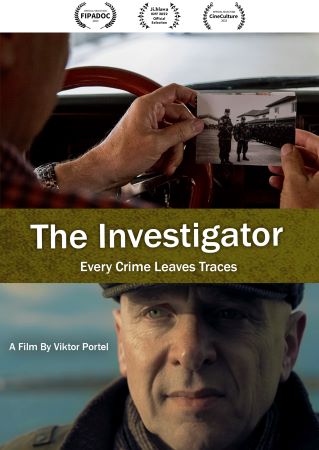
The Investigator 2022
Distributed by epf media, 324 S. Beverly Drive, PMB 437, Beverly Hills, CA 90212; 310-839-1500
Produced by Hana Blaha Šilarová
Directed by Viktor Portel
Streaming, 73 mins
College - General Adult
European Studies; Genocide; United Nations; War crimes
Date Entered: 08/24/2023
Reviewed by Max Sparkman, Social Sciences Librarian, SUNY GeneseoBased on his book of the same name, The Investigator highlights the experience of Vladimír Dzuro, an investigator for the International Criminal Tribunal for the former Yugoslavia (ICTY), both during his tenure and after. Using case studies and a combination of newsreels and interviews, the film does a good job of showcasing the need for the Tribunal while still recognizing its shortcomings. The two example cases addressed in the film are Slavko Dokmanović (Ovčara/Vukovar) and Željko Ražnatović Arkan (Sanski Most and Trnova). Both examples show acts of Serbian aggression, though a disclaimer at the beginning of the film reminds viewers that these are two of countless examples committed by all of the former Yugoslavia, not just Serbia.
In theory, The Investigator claims to underscore the importance of investigation and reconciliation, ideas that don’t always work together as the investigation stirs negative feelings. In practice, however, the film seems to balance its focus between examples of war crimes and Dzuro's experiences with the Tribunal, offering a cursory overview of both subjects. Each example occupies roughly half of the film's runtime, and the segments follow a relatively uniform structure. The film first provides an overview of the crime and the perpetrator's involvement, employing a blend of narration, witness interviews, and news footage. Subsequently, Dzuro's narration, accompanied by additional found footage, addresses the process of apprehending the accused, the trial proceedings, and the case's resolution. This approach lends the film a semblance of a case brief, enhanced with commentary.
The most noteworthy aspect of the film is the inclusion of witness interviews. Testimonies are delivered by individuals with varying roles in each case, encompassing survivors, journalists, government officials, and even the families of the accused. Beyond shedding light on the events themselves, these witnesses offer insights into how the Tribunal affected them personally, often revealing a lingering bitterness. Most interviews are paired with original footage echoing the recounted stories. For instance, descriptions of being boarded onto a bus are accompanied by footage of the speaker boarding a bus. While this technique adds visual engagement, it occasionally results in extended views of people's backs. This situation is compounded by the fact that the names of witnesses are only displayed upon their initial speech, potentially leading to confusion about their respective roles. The issue of lacking context extends to certain footage, both pre-existing and newly captured, throughout the film. As an example, older footage from a peace rally in Bosnia and Herzegovina introduces the second half of the film. The camera closely examines the signs and clothing worn by attendees, yet without translations, the impact of the text is lost. This issue is not restricted to found footage—there's a new capture scene showing Dzuro attempting to sleep in a room adjacent to a rave. A lack of narration or any text combined with a stark cut to found footage or what appear to be several body bags makes the scene feel extraneous to the rest of the film.
Overall, this film provides a solid introduction to the ICTY and the Yugoslav Wars and emphasizes the horror of these events without resorting to shock value or gruesome footage. It is a good addition to any political science/international relations, Eastern European studies, or history collections, and can easily be shown in two parts for shorter classes if needed.
Awards:Ji.hlava International Documentary Film Festival, Czech Republic; International Documentary Festival FIPADOC, France; Official Selection CineCulture Fresno State College, US
Published and licensed under the Creative Commons Attribution 4.0 license. Anyone can use these reviews, so long as they comply with the terms of the license.